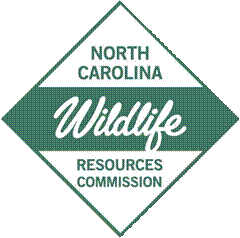
Conservation Tools
Conservation Decision Support Tools
As part of the 2015 revision of the N.C. Wildlife Action Plan (NCWAP), the N.C. Wildlife Resources Commission worked with the Biodiversity and Spatial Information Center (BaSIC) and the North Carolina Cooperative Fish and Wildlife Research Unit to develop two web-based tools to support priority conservation decisions that implement recommendations in the Plan. The BaSIC is a collaborative effort funded by the U.S. Geological Survey (USGS) and N.C. State University Southeast Climate Science Center to simulate future patterns of urban growth across a nine-state region over the next 50 years.
The NCWAP matches species of greatest conservation need (SGCN) to the habitat type or river basin where it is found, identifies the most important threats and critical problems facing the species and their habitats, and details priority conservation actions required to protect and conserve them. The two decision support tools use GIS modeling to analyze spatial data and the results can be linked to conservation action priorities outlined in the NCWAP.
One tool is the NC Wildlife Habitat Threat Risk Assessment (TRA) which is a spatially explicit tool that uses modeling to predict future probability that specific threats will occur relative to terrestrial and aquatic habitats, including climate change impacts and urbanization. The tool includes other types of threats that are not projected in time but whose occurrence on the landscape can create impacts or add to other impacts. The TRA tool allows users to explore individual threats or a combination of threats in a spatial environment as well as being able to combine and weigh components in user defined configurations to highlight specific threats and develop specific scenarios of future trends.
Another tool that supports NCWAP conservation priorities is the Conservation Opportunity Area (COA) tool. It can be used to identify areas predicted to contain the least amount of protected habitat for an ecoregion and natural community selected by the user. The top five areas from the analysis results are depicted on a map using HUC12 boundaries. The predicted species distribution datasets used in the COA tool includes amphibians, mammals, reptiles, breeding birds, and wintering waterfowl. The GAP range and land cover data has been correlated with a list of terrestrial SGCN and habitats in NCWAP Appendix H, a cross-walk table linking species with their habitats. The habitat and species information provided in the table is described in NCWAP Chapters 3 (Species) and 4 (Habitats).
The TRA and COA tools are intended to give managers, decision makers, and other users an accessible and flexible tool to help assess risks to wildlife populations, find areas where land protection may be needed, and ultimately, inform decisions. Details about both tools, including statistical analysis aspects of the TRA model, are provided in a user guide available to download in PDF format from www.ncwildlife.org/plan.





